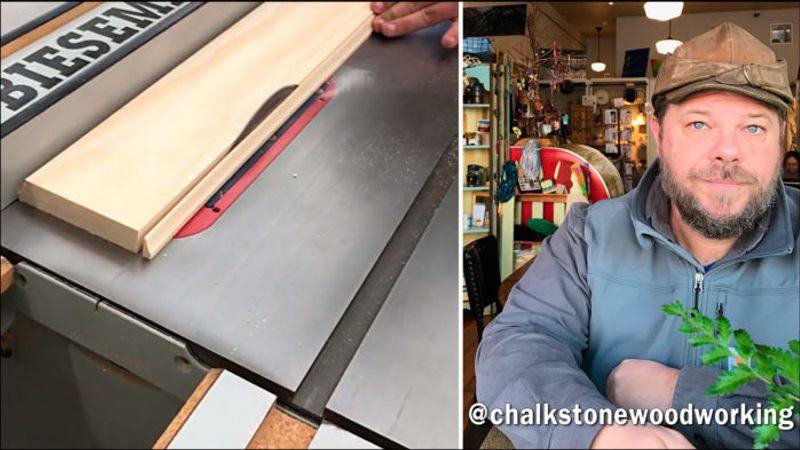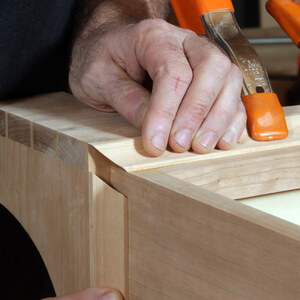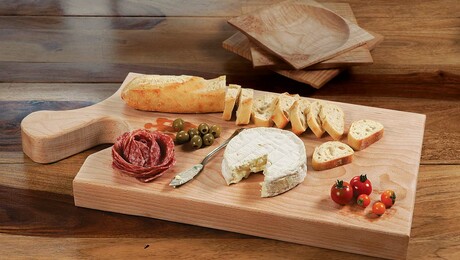Ripping narrow molding profiles
Ben Brunick (@chalkstonewoodworking) shows you how he rips narrow molding profiles off a board without any jigs
Ben Brunick is a professional woodworker in Yankton, South Dakota, and keeper of one our favorite Instagram accounts, @chalkstonewoodworking. He specializes in custom furniture, window restoration, and antique billiard restoration.
For Ben, working in a manner that is efficient and safe is the only way to pay the bills. A lot of Ben’s work involves recreating molding profile for millwork made decades ago. Many times, it’s just a small run that’s needed, so he doesn’t want to set up a bunch of jigs to get it done.
- After ripping a board to width, Ben makes sure to leave the fence in place
- Then he adds the profile to both sides of his board on a router table or shaper
- Next he nudges the fence over the width of the profile, plus the width of the blade, and rips the profile off of the other side
- He repeats as necessary
As with anything in woodworking, there are lots of other ways of accomplishing the same outcome. This is a great one to add to your bag of tricks next time you need to quickly make some molding.




















Comments
It seems a thin rip jig would take the guess work out of adjusting the saw with each rip.
Agree with previous comment. Also question FWW to post a video instruction where neither riving knife nor blade guard is used. I'm sure Ben is skilled and knows what he's doing, but FWW has viewers of all skill levels. Using the table saw without safety features is not a good practice to spread to beginner woodworkers.
is the power feeder driven by air? what was that valve that he opened at the shaper?
Ben is awesome! I too love his feed.His approach is perfect. Many people are mentioning using a guard and riving knife in the woodworking communities, well unfortunately those options didn't always exist on older machinery. As I always say learn to safely use the machine by taking a class. Ben doesn't need a riving knife or a guard since his hand are in a safe position. This technique isn't for beginners.
Yes that is an air driven feeder. Just what every woodworker needs to make stuff he gives away. Rockler makes an ideal jig or tool that fits in the miter track. Air motors are not quiet machines either. As user said, takes the guess work out of the equation.
"...working in a manner that is efficient and safe..." Wow, no blade guard, no riving knife or splitter. Not what I would call safe. I don't care how experienced anyone is. That's just a really bad accident waiting to happen.
Log in or create an account to post a comment.
Sign up Log in